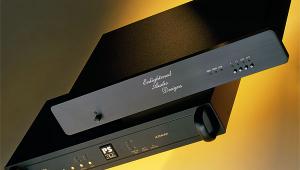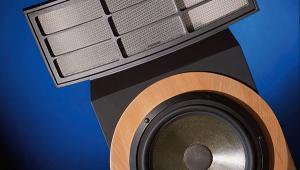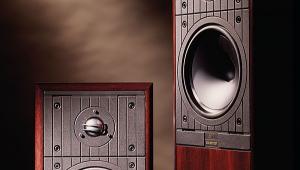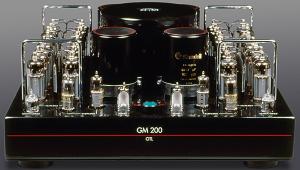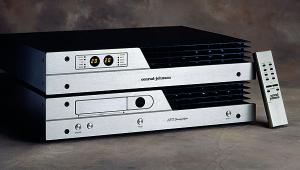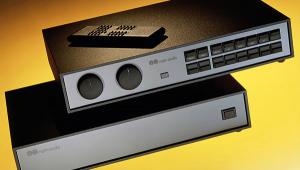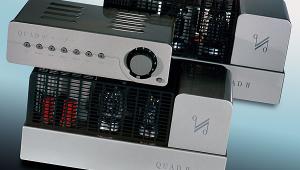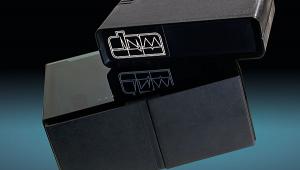Transistors Versus Tubes

 The irrepressible Antony Michaelson is at it again, with pre and power amps from Michaelson Audio and Musical Fidelity. Ken Kessler listens
The irrepressible Antony Michaelson is at it again, with pre and power amps from Michaelson Audio and Musical Fidelity. Ken Kessler listens
Upon my taking delivery of the review samples of Da Vinci, about which I was warned in mid-summer 1991, company founder Antony Michaelson launched into his usual tirade about the high-end, with barrels of venom for American ballbuster amps in particular.
His latest arguments fall into two categories, the first being that all high-end amplifiers besides his own are rip-offs. This is not an uncommon attitude among most high-end manufacturers, and I'd distrust any of them who didn't have the same faith in their own products.
Like A Hurricane
The second is that there's no reason an amplifier combination selling for £500 can't blow away the best America has to offer at any price. More to the point is that such a bargain would rejuvenate sales even in a depressed market. And if I hadn't heard how well Acoustic Research is doing with the awesome yet cost-effective M1 loudspeaker during this recession, I'd have written off Michaelson's arguments as naive and optimistic.
What that beer-budget talk has to do with the Da Vinci pre- and power amp, which is not (at ten pounds under two grand for the pair) a budget package, is simple. Michaelson turned up at my door with The Preamp and the Typhoon amplifier at the same time he delivered the Da Vincis. Without warning, I should add. And, as if to unsheath his own monogrammed petard, Michaelson asked me to compare The Preamp (£199) and the Typhoon (£299) in tandem and solo with the Da Vinci components.

And hoisted he most certainly was, because The Preamp/Typhoon combination is so ridiculously good for what amounts to such a comparatively small outlay that it almost makes the Da Vinci look bad. Which it isn't. By insisting on this internecine duel, Michaelson has produced a textbook illustration of the Law of Diminishing Returns.
Maybe I should have reviewed these separately, the wee solid-state gear overshadowing the far costlier tube products. It's like any bargain-vs-luxury situation. It's not that the dearer stuff isn't good. It's just that the cheaper stuff is too good.
The Da Vinci
The idea behind Da Vinci was to offer the company's Odysseus integrated amplifier in two-chassis form, adding to the basic product the option of mono-ing capability for the amplifier (with the purchase of a second Da Vinci, of course); this is in addition to the expected gains of another power supply. Less publicised is the idea of producing a Chronos for the 'poor', with the Da Vinci costing one-fifth the price of the Michaelson Audio flagship.
The Da Vinci preamp is a line-level-only device, though provision has been made for powering the forthcoming phono amp via a socket at the rear. All six line inputs are specified the same, 310mV for 775mV, and I could detect no sonic differences among the inputs. The valve lineup consists of eight ECC81s, the circuit employing parallel tube cascode output stages.
Big Bang
Like the preamp, the Da Vinci power amp sells for £995. But it matches not just with the price tag and styling, but with identical sonic character. Running in Class A, this amplifier turns any domestic room into a temperate zone, so it could be adjudged a wise economic move as it will allow you to turn down the thermostat during the winter months. The literature provides a comparison to two 150W light bulbs, which strikes me as understatement. I'd call it a toaster on 'Medium'. More to the point is the valve complement causing this heat wave: two ECC83s, two ECC85s and eight EL34s.

Converting the 45W/channel (at 8ohm) Da Vinci into a 50W/8ohm or 100W/4ohm monoblock requires only the pressing of a button at the back. The front panel sports two LEDs to indicate either mono or stereo operation. As Da Vincis were in short supply during the review period, I wasn't able to borrow a second sample for monoblock listening, but the amp still drove such tough loads as the Sonus faber Extrema and the Apogee Stages with power to spare, thus maintaining the reputation that Michaelson Audio valve amps have for sheer grunt and no fear of low impedances.
The Da Vinci system isn't just a 'grown up' or, more accurately, 'bisected' Odysseus. For one thing, it's more refined than the integrated amp, with less of a runaway feel despite the same sense of untamed horsepower. It also provides even more slam and fewer signs of 'valveness'.
No, this isn't an accusation of transistorism nor a suggestion that tube lovers should look elsewhere. In the key areas – lush midband, top-to-bottom consistency, three-dimensionality, resistance to harshness, 'friendly' clipping – the Da Vinci is almost stereotypically valve-like.

But the sledgehammer lower registers and the Jackie Chan attack make me think of Michaelson's nemesis: big bang Yankee amplifiers. The only other valve amp in my experience with this capability is the EAR 509/519, not surprising as tube god Tim de Paravicini designed the Da Vinci with Michaelson and owns EAR.
This sonic signature is so clearly defined in both parts of the Da Vinci package that using either in another system means adding a Da Vinci flavour which dominates. I know that this goes against the notion that the ideal component will seem invisible, but the infusion of Da Vinciness is a boon as we're talking about virtues, not colorations.
Either unit will do much to 'tighten' the sound in a loose system, which I find amusing when the rest of the set-up may feature vintage valves. A Da Vinci preamp may be the best upgrade you could make to a Quad II valve amp, though I wouldn't mate a Da Vinci power amp with a vintage preamp as most are too noisy and imprecise by today's standards.







